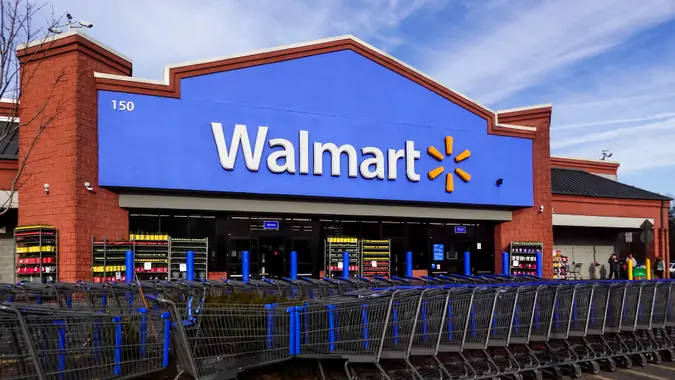Trump Orders 80% Cut in Prescription Drug Prices — Will You Really Save That Much?

Commitment to Our Readers
GOBankingRates' editorial team is committed to bringing you unbiased reviews and information. We use data-driven methodologies to evaluate financial products and services - our reviews and ratings are not influenced by advertisers. You can read more about our editorial guidelines and our products and services review methodology.

20 Years
Helping You Live Richer

Reviewed
by Experts

Trusted by
Millions of Readers
On Sunday, May 11, President Donald Trump made a lengthy post on Truth Social, accusing American Pharmaceutical companies of overcharging consumers for years and using the excuse of “Research and Development Costs” as an excuse for their high prices. Trump continued that the following day, he would be signing “one of the most consequential Executive Orders in our Country’s history,” one that would reduce prescription drug prices “by 30% to 80%” and “save trillions of dollars” for the U.S.
On May 12, Trump indeed signed an executive order that set a 30-day deadline for pharmaceutical companies to lower their prescription drug costs — but can it really slash 80% of drug costs? Or even 30%?
Next, find out why Mark Cuban says this executive order has a “real shot.”
Will the Executive Order Save You Money?
The answer is a resounding…maybe.
Trump signed a vast executive order that directs Secretary of Health and Human Services (HHS) Robert F. Kennedy Jr. — and other health department leaders — to negotiate newer, lower prices for drugs with pharmaceutical companies over the next 30 days. If he is unsuccessful, Kennedy and HHS will then be required to set medication prices to the lower levels paid in other countries, where drug prices are drastically lower than those in America.
At the press-attended signing, specifics were not given as to the administration’s goal pricing for medication, nor was it made clear exactly how HHS would lower drug prices if negotiations failed.
The Argument Against Cutting Costs
Unsurprisingly, medication developers and manufacturers almost immediately pushed back.
In a May 12 statement, Stephen J. Ubl, president and CEO of PhRMA, wrote, “Importing foreign prices from socialist countries would be a bad deal for American patients and workers. It would mean less treatments and cures and would jeopardize the hundreds of billions our member companies are planning to invest in America.”
Further doubt was cast by Washington University health law expert Rachel Sachs, who told AP News that Trump’s order boils down to asking “manufacturers to voluntarily lower their prices to some point, which is not known. If they do not lower their prices to the desired point, HHS shall take other actions with a very long timeline, some of which could potentially, years in the future, lower drug prices.”
Is an 80% Cut Realistic?
As it stands, HHS can adjust drug prices for those medications covered by Medicare and Medicaid; however, that power is restricted, slow and does not provide HHS with a blanket pricing authority.
Further still, HHS has even less authority over the drug prices paid by those millions of Americans with private insurance. At no point during the signing did Trump or Kennedy make expressly clear how they would restructure drug prices across the board to match those of other nations, should negotiations be unsuccessful.
It is possible — perhaps even likely — that the executive order will have some impact upon drug pricing over a long timeline. However, given all that is known thus far, a “30% to 80%” drop seems far less likely.
Editor’s note on political coverage: GOBankingRates is nonpartisan and strives to cover all aspects of the economy objectively and present balanced reports on politically focused finance stories. You can find more coverage of this topic on GOBankingRates.com.
More From GOBankingRates
Sources:
 Written by
Written by  Edited by
Edited by 

























